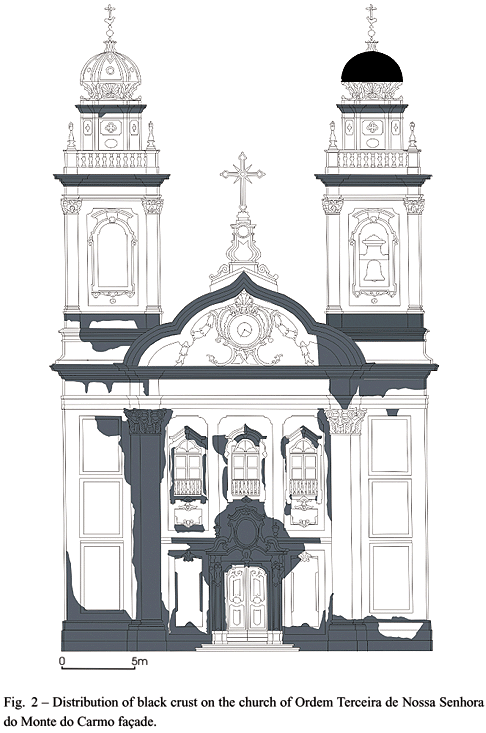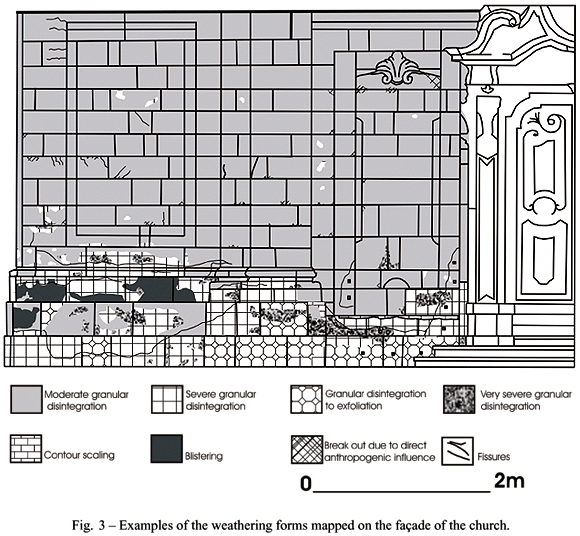In order to evaluate environmental controls on the soiling formation and decay of building stones a set of mapping and physical and chemical analyses were carried out on granite from a historical church in the polluted centre of Rio de Janeiro. These techniques highlight the increasing of threatening damage on generally perceived as a durable building material, caused by granular disaggregation and contour scaling in areas close to ground level. Mapping also indicated the formation of black crusts over entire building façades, concentrated on areas sheltered from rain-wash. Analyses demonstrated the influence of marine aerosols, rock and mortar composition and mostly of the atmospheric pollutants on the decay and soiling of the granite. Much of the decay is associated specifically with the presence of halite (NaCl) and gypsum (CaS04.2H2O). The fact that black, gypsum crusts are able to develop over entire façades in a humid subtropical environment is testimony to the high levels of local pollution, especially particulate deposition. Reduced rainwash, in sheltered micro-environments of narrow, canyon-like streets, overcomes the gypsum tendency to bewashed away from buildings façades. These observations further highlight that decay processes are primarily controlled by microclimatic conditions.
weathering; granite; air pollution; marine aerosols; gypsum crusts






